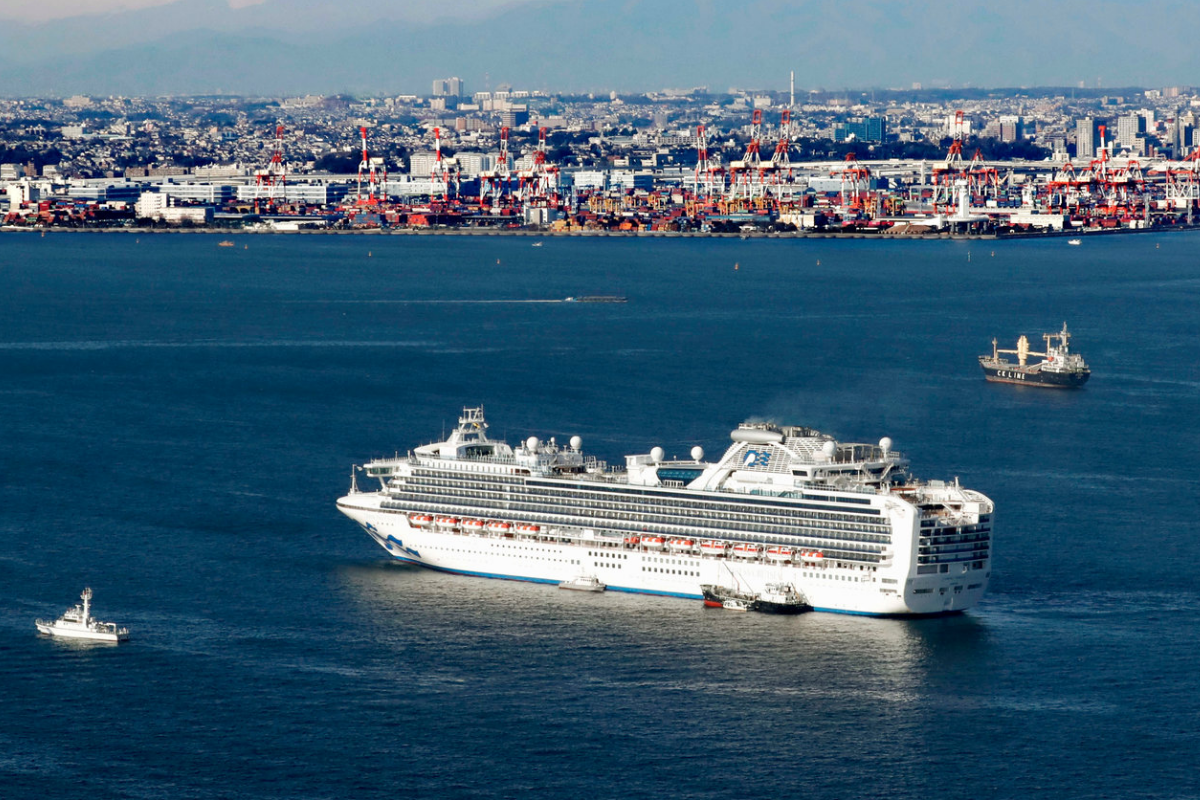61 Japanese cruise ship passengers diagnosed with coronavirus

A few minutes every morning is all you need.
Stay up to date on the world's Headlines and Human Stories. It's fun, it's factual, it's fluff-free.
A total of 61 people aboard Carnival Japan’s Diamond Princess cruise ship have tested positive for the coronavirus (2019-nCoV), after a passenger, who disembarked six days earlier also tested positive on February 1. The ship is on a two-week quarantine in Yokohama, Japan with 3,700 passengers aboard after 10 people were discovered having contracted the coronavirus on February 3.
According to Japan’s Health Minister, Katsunobu Kato, 21 of the 41 new cases are all Japanese nationals. The remaining consist of eight Americans, five Australians, five Canadians, and one each from Argentina and Britain. Kato says the total 61 cases come from 273 people who were tested since they had shown symptoms or had been in close contact with those who did.
Those with the virus have been taken to hospitals across Tokyo, Kanagawa, Chiba, Saitama and Shizuoka prefectures for treatment.
Efforts to contain virus
The additional 61 cases from the cruise ship bring the total number of coronavirus cases in Japan to 86. The Japanese government is undertaking urgent efforts to contain the outbreak from spreading throughout the country.
On February 1, Japan imposed a ban on foreign nationals entering the country who have recently visited Wuhan, the epicenter of the virus outbreak. On February 8, Tokyo opted to refuse entry into the country to non-citizen passengers on a luxury cruise ship that is scheduled to arrive in Okinawa for fears of the spreading of the new coronavirus. Prime Minister Shinzo Abe said on February 6 that the ship, known as the Westerdam, which had set sail from Hong Kong earlier this month already has a few suspected cases on board.
Chinese travelers cancel trips to Japan
The Japan Association of Travel Agents has forecast 400,000 fewer travelers from China to Japan in March, based on tourism visa application numbers.
Abe has also said that Japan is currently verifying data to identify high-risk Chinese regions. “We are analyzing the data on patients within China to determine which regions have a high risk,” Abe told a Lower House committee. “We remain open-minded on what measures to take, including the possibility of expanding the regions.”
Chinese tourists make up 30% of all tourists in Japan, according to an industry survey.
[article_ad]




Comments ()